xyhor-astronomy
For more content, Click Here and experience this XYHor in its entirety!Space...the Final Frontier. Let's boldly go where few have gone before with XYHor: Space: Astronomy & Spacefaring: the collection of the latest finds and science behind exploring our solar system, how we'll get there and what we need to be prepared for!
128 posts
Latest Posts by xyhor-astronomy
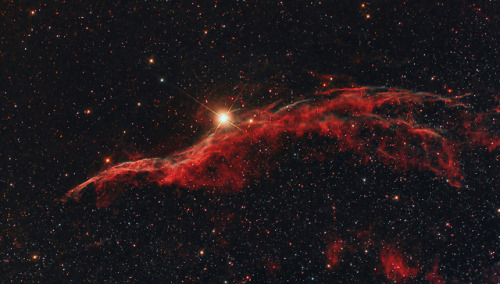
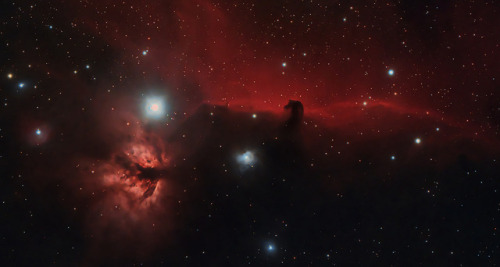
NGC 6960 (Western Veil nebula) & Horsehead Nebula and the Flame Nebula
by David Wills

This stunning multi-mission picture shows off the many sides of the supernova remnant Cassiopeia A. It is made up of images taken by three of NASA’s Great Observatories, using three different wavebands of light. Infrared data from the Spitzer Space Telescope are colored red; visible data from the Hubble Space Telescope are yellow; and X-ray data from the Chandra X-ray Observatory are green and blue.
Image credit: NSA/JPL










Dunes, peaks and craters on Mars obtained by HiRISE (High Resolution Imaging Science Experiment), a camera on board the Mars Reconnaissance Orbiter.
Image credit: NASA/JPL/University of Arizona
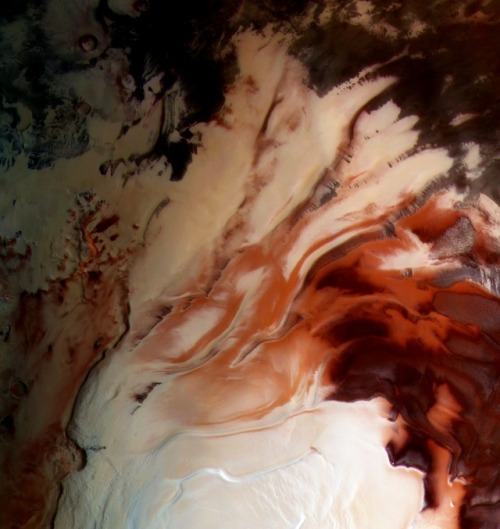
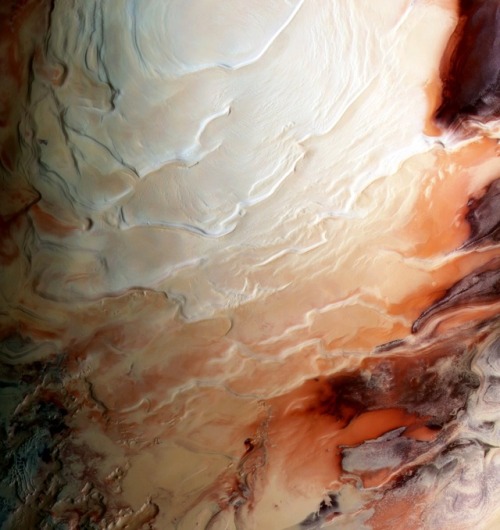
Martian North Pole
ESA / G. Neukum (Freie Universitaet, Berlin) / Bill Dunford










December 13, 1965 – Truly spectacular images of our planet captured by the astronauts of Gemini 7 as they zoomed around the Earth. In this era when we receive a daily dose of awesomeness from hi-res cameras on the ISS and various satellites, it’s easy to take beautiful Earth images for granted. I will never cease to be amazed by the stunning photography produced during the Project Gemini missions.
(NASA/Arizona State University)

December 13, 1972 – Photos taken during the Apollo 17 rover’s drive back to the lunar module. (NASA)
Reinventing the Wheel
Planning a trip to the Moon? Mars? You’re going to need good tires…

Exploration requires mobility. And whether you’re on Earth or as far away as the Moon or Mars, you need good tires to get your vehicle from one place to another. Our decades-long work developing tires for space exploration has led to new game-changing designs and materials. Yes, we’re reinventing the wheel—here’s why.
Wheels on the Moon

Early tire designs were focused on moving hardware and astronauts across the lunar surface. The last NASA vehicle to visit the Moon was the Lunar Roving Vehicle during our Apollo missions. The vehicle used four large flexible wire mesh wheels with stiff inner frames. We used these Apollo era tires as the inspiration for new designs using newer materials and technology to better function on a lunar surface.
Up springs a new idea

During the mid-2000s, we worked with industry partner Goodyear to develop the Spring Tire, an airless compliant tire that consists of several hundred coiled steel wires woven into a flexible mesh, giving the tires the ability to support high loads while also conforming to the terrain. The Spring Tire has been proven to generate very good traction and durability in soft sand and on rocks.
Spring Tires for Mars

A little over a year after the Mars Curiosity Rover landed on Mars, engineers began to notice significant wheel damage in 2013 due to the unexpectedly harsh terrain. That’s when engineers began developing new Spring Tire prototypes to determine if they would be a new and better solution for exploration rovers on Mars.

In order for Spring Tires to go the distance on Martian terrain, new materials were required. Enter nickel titanium, a shape memory alloy with amazing capabilities that allow the tire to deform down to the axle and return to its original shape.
These tires can take a lickin’

After building the shape memory alloy tire, Glenn engineers sent it to the Jet Propulsion Laboratory’s Mars Life Test Facility. It performed impressively on the punishing track.
Why reinvent the wheel? It’s worth it.

New, high performing tires would allow lunar and Mars rovers to explore greater regions of the surface than currently possible. They conform to the terrain and do not sink as much as rigid wheels, allowing them to carry heavier payloads for the same given mass and volume. Also, because they absorb energy from impacts at moderate to high speeds, there is potential for use on crewed exploration vehicles which are expected to move at speeds significantly higher than the current Mars rovers.
Airless tires on Earth

Maybe. Recently, engineers and materials scientists have been testing a spinoff tire version that would work on cars and trucks on Earth. Stay tuned as we continue to push the boundaries on traditional concepts for exploring our world and beyond.
Make sure to follow us on Tumblr for your regular dose of space: http://nasa.tumblr.com.
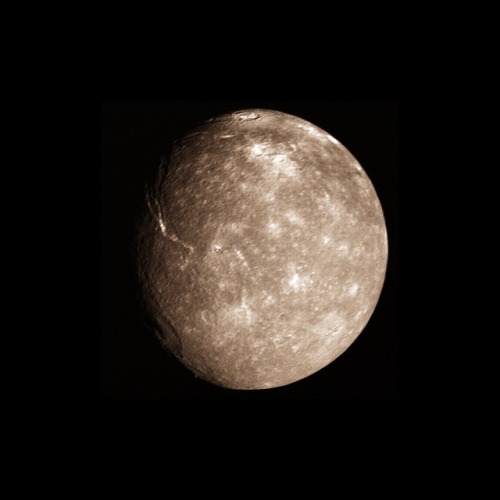

Two moons of Uranus: Titania and Oberon. Both moons were discovered by William Herschel in 1787.
Credit: NASA/JPL
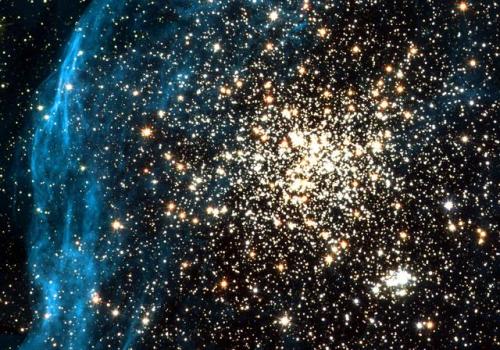
Located in the Large Magellanic Cloud, one of our neighbouring dwarf galaxies, this young globular-like star cluster is surrounded by a pattern of filamentary nebulosity that is thought to have been created during supernova blasts. It consists of a main globular cluster in the centre and a younger, smaller cluster, seen below and to the right, composed of extremely hot, blue stars and fainter, red T-Tauri stars. This wide variety of stars allows a thorough study of star formation processes.
Credit: ESA, NASA and Martino Romaniello (ESO, Germany)










The Largest Black Hole Merger Of All-Time Is Coming, And Soon
“Over in Andromeda, the nearest large galaxy to the Milky Way, a number of unusual systems have been found. One of them, J0045+41, was originally thought to be two stars orbiting one another with a period of just 80 days. When additional observations were taken in the X-ray, they revealed a surprise: J0045+41 weren’t stars at all.”
When you look at any narrow region of the sky, you don’t simply see what’s in front of you. Rather, you see everything along your line-of-sight, as far as your observing power can take you. In the case of the Panchromatic Hubble Andromeda Treasury, where hundreds of millions of stars were captured in impressive fashion, background objects thousands of times as distant can also be seen. One of them, J0045+41, was originally thought to be a binary star system that was quite tight: with just an 80 day orbital period. Follow-up observations in the X-ray, however, revealed that it wasn’t a binary star system after all, but an ultra-distant supermassive black hole pair, destined to merge in as little as 350 years. If we build the right observatory in space, we’ll be able to observe the entire inspiral-and-merger process for as long as we like!
Come get the full story, and some incredible pictures and visuals, on today’s Mostly Mute Monday!


NGC 7635, also known as the bubble Nebula.
Flying Monsters of Scorpius | Yuriy Toropin
Solar System: 10 Things to Know This Week
Even the most ambitious plans start with a drawing. Visualizing a distant destination or an ambitious dream is the first step to getting there. For decades, artists working on NASA projects have produced beautiful images that stimulated the imaginations of the people working to make them a reality.

Some of them offered visualizations of spacecraft that had not yet been built; others imagined what it might look like to stand on planets that had not yet been explored. This week, we look at 10 pieces of conceptual art for our missions before they were launched–along with actual photos taken when those missions arrived at their destinations.
1. Apollo at the Moon

In 1968, an artist with our contractor North American Rockwell illustrated a phase of the Apollo lunar missions, showing the Command and Service Modules over the surface of the Moon. In 1971, an astronaut aboard the Lunar Module during Apollo 15 captured a similar scene in person with a camera.
2. Ready for Landing

This artist’s concept depicts an Apollo Lunar Module firing its descent engine above the lunar surface. At right, a photo from Apollo 12 in 1969 showing the Lunar Module Intrepid, taken by Command Module Pilot Richard Gordon.
3. Man and Machine on the Moon

Carlos Lopez, an artist with Hughes Aircraft Company, created a preview of a Surveyor spacecraft landing for our Jet Propulsion Laboratory in the early 1960s. The robotic Surveyor missions soft landed on the Moon, collecting data and images of the surface in order to ensure a safe arrival for Apollo astronauts a few years later. In the image at right, Apollo 12 astronaut Alan Bean examines the Surveyor 3 spacecraft during his second excursion on the Moon in November 1969.
4. O Pioneer!

In missions that lived up to their names, we sent the Pioneer 10 and 11 spacecraft to perform the first up-close exploration of the outer solar system. At left, an artist’s imagining of Pioneer passing Jupiter. At right, Pioneer 11’s real view of the king of planets taken in 1974.
5. The Grand Tour

An even more ambitious pair of robotic deep space adventurers followed the Pioneers. Voyager 1 and 2 both visited Jupiter and Saturn. Voyager 2 went on to Uranus and Neptune. Even the most visionary artists couldn’t imagine the exotic and beautiful vistas that the Voyager spacecraft witnessed. These images were taken between 1979 and 1989.
6. Journey to a Giant

Our Cassini spacecraft carried a passenger to the Saturn system: the European Space Agency’s Huygens probe. Huygens was designed to land on Saturn’s planet-sized moon Titan. At left is an artist’s view of Cassini sending the Huygens probe on its way toward Titan, and at right are some actual images of the giant moon from Cassini’s cameras.
7. Titan Unveiled

On Jan. 14, 2005, the Huygens probe descended through Titan’s thick haze and revealed what Titan’s surface looks like for the first time in history. Before the landing, an artist imagined the landscape (left). During the descent, Huygens’ imagers captured the actual view at four different altitudes (center)—look for the channels formed by rivers of liquid hyrdocarbons. Finally, the probe came to rest on a pebble-strewn plain (right).
8. Hazy Skies over Pluto

David Seal rendered this imaginary view from the surface of Pluto, and in the sky above, an early version of the spacecraft that came to be known as our New Horizons. At the time, Pluto was already suspected of having a thin atmosphere. That turned out be true, as seen in this dramatic backlit view of Pluto’s hazy, mountainous horizon captured by one of New Horizons’ cameras in 2015.
9. Dreams on Mars, Wheels on Mars

Long before it landed in Gale Crater, our Curiosity rover was the subject of several artistic imaginings during the years the mission was in development. Now that Curiosity is actually rolling through the Martian desert, it occasionally stops to take a self-portrait with the camera at the end of its robotic arm, which it uses like a selfie stick.
10. The World, Ceres

No one knew exactly what the dwarf planet Ceres, the largest body in the asteroid belt, looked like until our Dawn mission got there. Dawn saw a heavily cratered world—with a few surprises, such as the famous bright spots in Occator crater.

There’s more to come. Today we have carefully created artist impressions of several unexplored destinations in the solar system, including the asteroids Psyche and Bennu, and an object one billion miles past Pluto that’s now called 2014 MU69.

You can help nickname this object (or objects—there may be two) by submitting your names by Dec. 1. Our New Horizons spacecraft will fly past MU69 on New Year’s Day 2019.
Soon, we’ll once again see how nature compares to our imaginations. It’s almost always stranger and more beautiful than we thought.
Make sure to follow us on Tumblr for your regular dose of space: http://nasa.tumblr.com.

OSIRIS-REx view of Earth and Moon
This color composite image of Earth and the Moon was taken October 2, 2017, 10 days after OSIRIS-REx performed its Earth Gravity Assist maneuver, using MapCam, the mid-range scientific camera onboard the spacecraft. The distance to Earth was approximately 5,120,000 km—about 13 times the distance between the Earth and Moon.
MapCam, part of the OSIRIS-REx Camera Suite (OCAMS) operated by the University of Arizona, has four color filters. To produce this image, three of them (b, v and w) were treated as a blue-green-red triplet, co-registered and stacked. The Earth and Moon were each color-corrected, and the Moon was “stretched” (brightened) to make it more easily visible.
via: The Planetary Society
image: NASA / GSFC / University of Arizona
What are brown dwarfs?
In order to understand what is a brown dwarf, we need to understand the difference between a star and a planet. It is not easy to tell a star from a planet when you look up at the night sky with your eyes. However, the two kinds of objects look very different to an astronomer using a telescope or spectroscope. Planets shine by reflected light; stars shine by producing their own light. So what makes some objects shine by themselves and other objects only reflect the light of some other body? That is the important difference to understand – and it will allow us to understand brown dwarfs as well.

As a star forms from a cloud of contracting gas, the temperature in its center becomes so large that hydrogen begins to fuse into helium – releasing an enormous amount of energy which causes the star to begin shining under its own power. A planet forms from small particles of dust left over from the formation of a star. These particles collide and stick together. There is never enough temperature to cause particles to fuse and release energy. In other words, a planet is not hot enough or heavy enough to produce its own light.

Brown dwarfs are objects which have a size between that of a giant planet like Jupiter and that of a small star. In fact, most astronomers would classify any object with between 13 times the mass of Jupiter and 75 times the mass of Jupiter to be a brown dwarf. Given that range of masses, the object would not have been able to sustain the fusion of hydrogen like a regular star; thus, many scientists have dubbed brown dwarfs as “failed stars”.

A Trio of Brown Dwarfs
This artist’s conception illustrates what brown dwarfs of different types might look like to a hypothetical interstellar traveler who has flown a spaceship to each one. Brown dwarfs are like stars, but they aren’t massive enough to fuse atoms steadily and shine with starlight – as our sun does so well.

On the left is an L dwarf, in the middle is a T dwarf, and on the right is a Y dwarf. The objects are progressively cooler in atmospheric temperatures as you move from left to right. Y dwarfs are the newest and coldest class of brown dwarfs and were discovered by NASA’s Wide-field Infrared Survey Explorer, or WISE. WISE was able to detect these Y dwarfs for the first time because it surveyed the entire sky deeply at the infrared wavelengths at which these bodies emit most of their light. The L dwarf is seen as a dim red orb to the eye. The T dwarf is even fainter and appears with a darker reddish, or magenta, hue. The Y dwarf is dimmer still. Because astronomers have not yet detected Y dwarfs at the visible wavelengths we see with our eyes, the choice of a purple hue is done mainly for artistic reasons. The Y dwarf is also illustrated as reflecting a faint amount of visible starlight from interstellar space.
In this rendering, the traveler’s spaceship is the same distance from each object. This illustrates an unusual property of brown dwarfs – that they all have the same dimensions, roughly the size of the planet Jupiter, regardless of their mass. This mass disparity can be as large as fifteen times or more when comparing an L to a Y dwarf, despite the fact that both objects have the same radius. The three brown dwarfs also have very different atmospheric temperatures. A typical L dwarf has a temperature of 2,600 degrees Fahrenheit (1,400 degrees Celsius). A typical T dwarf has a temperature of 1,700 degrees Fahrenheit (900 degrees Celsius). The coldest Y dwarf so far identified by WISE has a temperature of less than about 80 degrees Fahrenheit (25 degrees Celsius).
Sources: starchild.gsfc.nasa.gov & nasa.gov
image credit: NASA / JPL-Caltech
Eight curiosities about black holes
In this post contains some facts and curiosities about one of the most extreme objects in the universe - Black Holes. Black holes are some of the strangest and most fascinating objects found in outer space. They are objects of extreme density, with such strong gravitational attraction that even light cannot escape from their grasp if it comes near enough.

1° A Massive Star Collapsing In Upon Itself
Say you have a star that’s about 20 times more massive than the Sun. Our Sun is going to end its life quietly; when its nuclear fuel burns out, it’ll slowly fade into a white dwarf. That’s not the case for far more massive stars. When those monsters run out of fuel, gravity will overwhelm the natural pressure the star maintains to keep its shape stable. When the pressure from nuclear reactions collapses, according to the Space Telescope Science Institute, gravity violently overwhelms and collapses the core and other layers are flung into space. This is called a supernova. The remaining core collapses into a singularity — a spot of infinite density and almost no volume. That’s another name for a black hole.

2° Black holes come in a range of sizes.
There are at least three types of black holes, ranging from relative squeakers to those that dominate a galaxy’s center. Primordial black holes are the smallest kinds, and range in size from one atom’s size to a mountain’s mass. Stellar black holes, the most common type, are up to 20 times more massive than our own Sun and are likely sprinkled in the dozens within the Milky Way. And then there are the gargantuan ones in the centers of galaxies, called “supermassive black holes.” They’re each more than one million times more massive than the Sun. How these beasts formed is still being examined.

3° The first black hole wasn’t discovered until X-ray astronomy was used
Cygnus X-1 was first found during balloon flights in the 1960s, but wasn’t identified as a black hole for about another decade. According to NASA, the black hole is 10 times more massive to the Sun. Nearby is a blue supergiant star that is about 20 times more massive than the Sun, which is bleeding due to the black hole and creating X-ray emissions.

4° Black holes are only dangerous if you get too close
Like creatures behind a cage, it’s okay to observe a black hole if you stay away from its event horizon — think of it like the gravitational field of a planet. This zone is the point of no return, when you’re too close for any hope of rescue. But you can safely observe the black hole from outside of this arena. By extension, this means it’s likely impossible for a black hole to swallow up everything in the Universe (barring some sort of major revision to physics or understanding of our Cosmos, of course.)

5° We aren’t sure if wormholes exist
A popular science-fiction topic concerns what happens if somebody falls into a black hole. Some people believe these objects are a sort of wormhole to other parts of the Universe, making faster-than-light travel possible. But as this Smithsonian Magazine article points out, anything is possible since we still have a lot to figure out about physics. “Since we do not yet have a theory that reliably unifies general relativity with quantum mechanics, we do not know of the entire zoo of possible spacetime structures that could accommodate wormholes,” said Abi Loeb, who is with the Harvard-Smithsonian Center for Astrophysics.

6° Black holes will spaghettify you and everything else
If a person was able to survive long enough to describe falling into a black hole, he would at first experience weightless as he goes into free fall, but then feel intense “tidal” gravitational forces as he got closer to the center of the black hole. In other words, if his feet were closer to the centre than his head, then they would feel a stronger pull until he eventually is stretched and then ripped apart. As he falls in he may observe distorted images as the light bends around him and he will also still be able to see beyond the black hole as light continues to reach him from the outside.

7° Weird time stuff happens around black holes
This is best illustrated by one person (call them Unlucky) falling into a black hole while another person (call them Lucky) watches. From Lucky’s perspective, Unlucky’s time clock appears to be ticking slower and slower. This is in accordance with Einstein’s theory of general relativity, which (simply put) says that time is affected by how fast you go, when you’re at extreme speeds close to light. The black hole warps time and space so much that Unlucky’s time appears to be running slower. From Unlucky’s perspective, however, their clock is running normally and Lucky’s is running fast.

8° Massive Black Hole in The Center Of Milky Way
It is now thought that most galaxies are held together by supermassive black holes at their centers, which cluster hundreds of solar systems around them. In fact, 30,000 light years away at the centre of our own Milky Way galaxy is a black hole with 30 million times the mass of our own sun.
Source: space.com, universetoday.com, sciencealert.com & astronomytrek.com

Meteor impact craters of the world
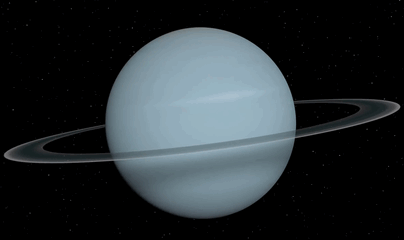
Planet Uranus ♅
Equatorial Diameter: 51.118 km
Satellites: 27
Notable satellites: Oberon, Titania, Miranda, Ariel & Umbriel
Orbit Distance: 2.870.658.186 km (19 AU)
Orbit Period: 84 Earth years
Surface Temperature: -220°C
Discovered Date: March 13th 1781
Discovered By: William Herschel
Image credit: Oscar Malet

An irregular island
This image, courtesy of the NASA/ESA Hubble Space Telescope’s Advanced Camera for Surveys (ACS), captures the glow of distant stars within NGC 5264, a dwarf galaxy located just over 15 million light-years away in the constellation of Hydra (The Sea Serpent).
Dwarf galaxies like NGC 5264 typically possess around a billion stars — just one per cent of the number of stars found within the Milky Way. They are usually found orbiting other, larger, galaxies such as our own, and are thought to form from the material left over from the messy formation of their larger cosmic relatives.
NGC 5264 clearly possesses an irregular shape — unlike the more common spiral or elliptical galaxies — with knots of blue star formation. Astronomers believe that this is due to the gravitational interactions between NGC 5264 and other galaxies nearby. These past flirtations sparked the formation of new generations of stars, which now glow in bright shades of blue.
https://www.spacetelescope.org/images/potw
(CNN) On October 19, the Pan-STARRS 1 telescope in Hawaii spotted something strange zooming through our solar system. It turned out to be a visitor from beyond our solar system, and it's unlike anything astronomers have seen before.
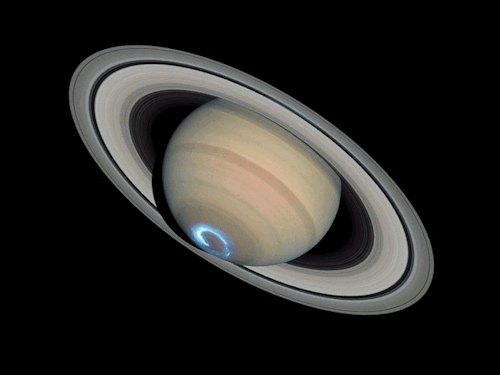
Sequence of images of auroras seen at the south pole of Saturn. Images combine visible and ultraviolet light.
Credit: NASA, ESA, J. Clarke (Boston University, USA), and Z. Levay (STScI)
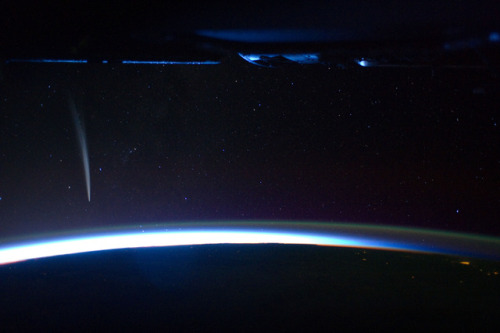
Comet Lovejoy is visible near Earth’s horizon in this nighttime image photographed by NASA astronaut Dan Burbank, Expedition 30 commander, onboard the International Space Station on Dec. 21, 2011.
Image credit: NASA

Composed of gas and dust, the pictured pillar resides in a tempestuous stellar nursery called the Carina Nebula, located 7500 light-years away in the southern constellation of Carina.
Credit: NASA, ESA and the Hubble SM4 ERO Team

This NASA/ESA Hubble Space Telescope image is chock-full of galaxies. Each glowing speck is a different galaxy, except the bright flash in the middle of the image which is actually a star lying within our own galaxy that just happened to be in the way. At the center of the image lies something especially interesting, the center of the massive galaxy cluster called WHL J24.3324-8.477, including the brightest galaxy of the cluster.
The Universe contains structures on various scales — planets collect around stars, stars collect into galaxies, galaxies collect into groups, and galaxy groups collect into clusters. Galaxy clusters contain hundreds to thousands of galaxies bound together by gravity. Dark matter and dark energy play key roles in the formation and evolution of these clusters, so studying massive galaxy clusters can help scientists to unravel the mysteries of these elusive phenomena.
Credit: ESA/Hubble & NASA

A slow-motion animation of the Crab Pulsar taken at 800 nm wavelength (near-infrared) using a Lucky Imaging camera from Cambridge University, showing the bright pulse and fainter interpulse.
Credit: Cambridge University Lucky Imaging Group

ON THIS DAY: An impressive impact crater on Mars, observed by NASA’s Mars Reconnaissance Orbiter, November 19, 2013. (NASA)
Low genetic diversity is a problem when you’re founding a new colony, so how would we avoid that on another planet?
A Hitchhiker’s Ride to Space
This month, we are set to launch the latest weather satellite from the National Oceanic and Atmospheric Administration (NOAA). The Joint Polar Satellite System-1, or JPSS-1, satellite will provide essential data for timely and accurate weather forecasts and for tracking environmental events such as forest fires and droughts.

Image Credit: Ball Aerospace
JPSS-1 is the primary satellite launching, but four tiny satellites will also be hitchhiking a ride into Earth orbit. These shoebox-sized satellites (part of our CubeSat Launch Initiative) were developed in partnership with university students and used for education, research and development. Here are 4 reasons why MiRaTA, one of the hitchhikers, is particularly interesting…

Miniaturized Weather Satellite Technology
The Microwave Radiometer Technology Acceleration (MiRaTA) CubeSat is set to orbit the Earth to prove that a small satellite can advance the technology necessary to reduce the cost and size of future weather satellites. At less than 10 pounds, these nanosatellites are faster and more cost-effective to build and launch since they have been constructed by Principal Investigator Kerri Cahoy’s students at MIT Lincoln Laboratory (with lots of help). There’s even a chance it could be put into operation with forecasters.

The Antenna? It’s a Measuring Tape
That long skinny piece coming out of the bottom right side under MiRaTA’s solar panel? That’s a measuring tape. It’s doubling as a communications antenna. MiRaTA will measure temperature, water vapor and cloud ice in Earth’s atmosphere. These measurements are used to track major storms, including hurricanes, as well as everyday weather. If this test flight is successful, the new, smaller technology will likely be incorporated into future weather satellites – part of our national infrastructure.

Tiny Package Packing a Punch MiRaTA will also test a new technique using radio signals received from GPS satellites in a higher orbit. They will be used to measure the temperature of the same volume of atmosphere that the radiometer is viewing. The GPS satellite measurement can then be used for calibrating the radiometer. “In physics class, you learn that a pencil submerged in water looks like it’s broken in half because light bends differently in the water than in the air,” Principal Investigator Kerri Cahoy said. “Radio waves are like light in that they refract when they go through changing densities of air, and we can use the magnitude of the refraction to calculate the temperature of the surrounding atmosphere with near-perfect accuracy and use this to calibrate a radiometer.”

What’s Next?
In the best-case scenario, three weeks after launch MiRaTA will be fully operational, and within three months the team will have obtained enough data to study if this technology concept is working. The big goal for the mission—declaring the technology demonstration a success—would be confirmed a bit farther down the road, at least half a year away, following the data analysis. If MiRaTA’s technology validation is successful, Cahoy said she envisions an eventual constellation of these CubeSats orbiting the entire Earth, taking snapshots of the atmosphere and weather every 15 minutes—frequent enough to track storms, from blizzards to hurricanes, in real time.
Learn more about MiRaTA
Watch the launch!

The mission is scheduled to launch this month (no sooner than Nov. 14), with JPSS-1 atop a United Launch Alliance (ULA) Delta II rocket lifting off from Space Launch Complex 2 at Vandenberg Air Force Base in California. You’ll be able to watch on NASA TV or at nasa.gov/live.

Watch the launch live HERE on Nov. 14, liftoff is scheduled for Tuesday, 4:47 a.m.!
Make sure to follow us on Tumblr for your regular dose of space: http://nasa.tumblr.com.